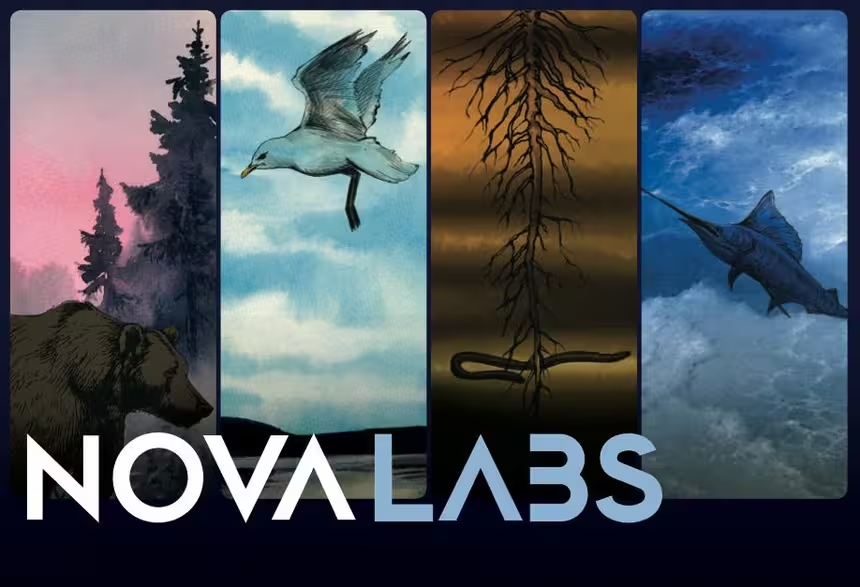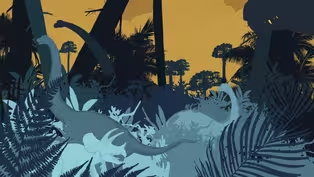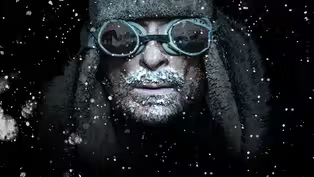
When Camels Roamed the Arctic
Clip: Season 51 Episode 4 | 2m 54sVideo has Closed Captions
The oldest DNA ever recovered revealed an ecosystem unlike anything that exists today.
Some 2 million years ago, when the high Arctic was a much warmer, greener place, a unique collection of animals coexisted: Caribou, geese, hares, even camels.
Problems playing video? | Closed Captioning Feedback
Problems playing video? | Closed Captioning Feedback
National Corporate funding for NOVA is provided by Carlisle Companies and Viking Cruises. Major funding for NOVA is provided by the NOVA Science Trust, the Corporation for Public Broadcasting, and PBS viewers.

When Camels Roamed the Arctic
Clip: Season 51 Episode 4 | 2m 54sVideo has Closed Captions
Some 2 million years ago, when the high Arctic was a much warmer, greener place, a unique collection of animals coexisted: Caribou, geese, hares, even camels.
Problems playing video? | Closed Captioning Feedback
How to Watch NOVA
NOVA is available to stream on pbs.org and the free PBS App, available on iPhone, Apple TV, Android TV, Android smartphones, Amazon Fire TV, Amazon Fire Tablet, Roku, Samsung Smart TV, and Vizio.
Buy Now

NOVA Labs
NOVA Labs is a free digital platform that engages teens and lifelong learners in games and interactives that foster authentic scientific exploration. Participants take part in real-world investigations by visualizing, analyzing, and playing with the same data that scientists use.Providing Support for PBS.org
Learn Moreabout PBS online sponsorship- [Narrator] A dramatic breakthrough is transporting us millions of years back into the past, to before the last Ice Age.
(dramatic music) Revealing surprising creatures that thrived when our planet was far warmer than it is today.
(birds chirping) - As if by magic, we were seeing the genetic signatures of these plants and animals appear.
Bang!
Bang!
Bang!
Fleas, lemmings, Arctic hare, geese, caribou.
A whole forest ecosystem.
Large poplar, willow, spruce, ash, cedar trees.
We're looking at a long list of organisms from a place that today is an Arctic desert.
- [Narrator] But with the spectacular discovery of DNA from Greenland, finally, a detailed portrait of this lost world is emerging.
And it's even stranger than scientists expected.
- [Natalia] I think the thing that really blew our minds from the Pliocene is the camel.
- [Narrator] How could this camel, known only by a few fragments of bone, survive so far north?
The living world revealed by the Greenland DNA gives us some clues.
- When you think about camels today, it's really easy to imagine that they evolved to live in the desert.
And this is where the finding of the High Arctic camel is so mind blowing, right?
Because it's not in a desert.
It's living a complete opposite to a desert.
It's in a forest.
Ever notice how huge a camel's eye is?
Well, it turns out they have incredible vision, including night vision.
That's pretty useful when it's dark six months of the year.
One of the most dramatic features of the camel, it's the hump.
It's actually a specialized fat deposit.
And when you think about the importance of fat energy storage, this is something that's also very important for animals that survive through harsh winters.
The wide feet of camels, it's listed as one of the traits that helps them walk over sand, also would function well in soft snow.
- We haven't found camel DNA from before the Ice Age.
Not yet.
(dramatic music) But we have now recreated the forest world they were living in.
And Natalia's fossils tells us they were there.
(dramatic music) This is a forest that's stretched from Greenland to Canada on solid land without barriers.
- We used to believe that ancient DNA could take you back a few thousand years.
Today, we know we can see millions of years back in time.
Could Jurassic Park Actually Happen?
Video has Closed Captions
Clip: S51 Ep4 | 1m 55s | Will we ever get dinosaur DNA? (1m 55s)
Hunt for the Oldest DNA Preview
Video has Closed Captions
Preview: S51 Ep4 | 30s | Follow the quest to recover DNA millions of years old for the very first time. (30s)
Providing Support for PBS.org
Learn Moreabout PBS online sponsorship
- Science and Nature

Capturing the splendor of the natural world, from the African plains to the Antarctic ice.

- Science and Nature

Learn how centuries of knowledge helped our ancestors understand the mysteries of space.












Support for PBS provided by:
National Corporate funding for NOVA is provided by Carlisle Companies and Viking Cruises. Major funding for NOVA is provided by the NOVA Science Trust, the Corporation for Public Broadcasting, and PBS viewers.



